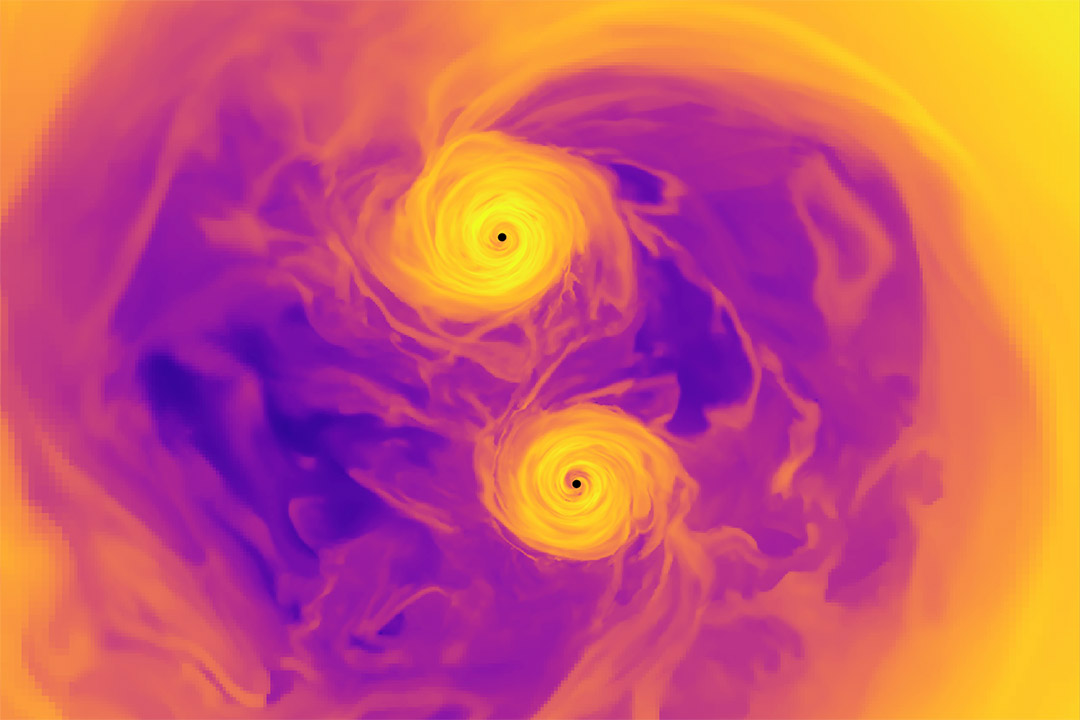RIT astrophysicist comments on supermassive binary black hole discovery
Provided image
The image shows a simulation of a supermassive black hole binary and their inner accretion disks performed by RIT’s astrophysical sciences and technology Ph.D. student Lorenzo Ennoggi.
Astrophysicists using large radio telescopes to observe a collection of cosmic clocks in our galaxy have found evidence for gravitational waves that oscillate with periods of years to decades, according to a set of papers published Thursday in The Astrophysical Journal Letters.
The gravitational-wave signal was observed in 15 years of data acquired by the North American Nanohertz Observatory for Gravitational Waves (NANOGrav) Physics Frontiers Center (PFC), a collaboration of more than 190 scientists from the United States and Canada who use pulsars to search for gravitational waves. International collaborations using telescopes in Europe, India, Australia, and China have independently reported similar results.
“The NanoGrav’s breakthrough discovery provides strong support for what astronomers have been waiting to hear for many years—that the universe, since its earliest days, hosts a very large number of these supermassive binary mergers,” said RIT astrophysicist Manuela Campanelli, who was not part of this study but has been working for over a decade to model the electromagnetic signatures from these powerful mergers. “There are so many of them that they produce a huge gravitational-wave background hum that can now be observed and used to better understand the formation and evolution of the universe.”
Supermassive black hole binary mergers are among the most dramatic phenomena in the universe, Campanelli said.
“If we can observe binary black holes in the act of merging, simultaneously on both the gravitational and electromagnetic spectra, we will gain insight into their nature and where the universe is heading,” she said.
Campanelli, director of RIT’s Center for Computational Relativity and Gravitation, is a leader in gravitational-wave astronomy. Her team’s research was integral to the breakthrough detection of gravitational waves from binary black holes that was announced in 2016 by the Laser Interferometer Gravitational-wave Observatory (LIGO) Scientific Collaboration. The collaboration’s findings confirmed the existence of gravitational waves predicted by Albert Einstein’s 1915 general theory of relativity and introduce a revolutionary new way of understanding the universe through gravitational wave astronomy.










